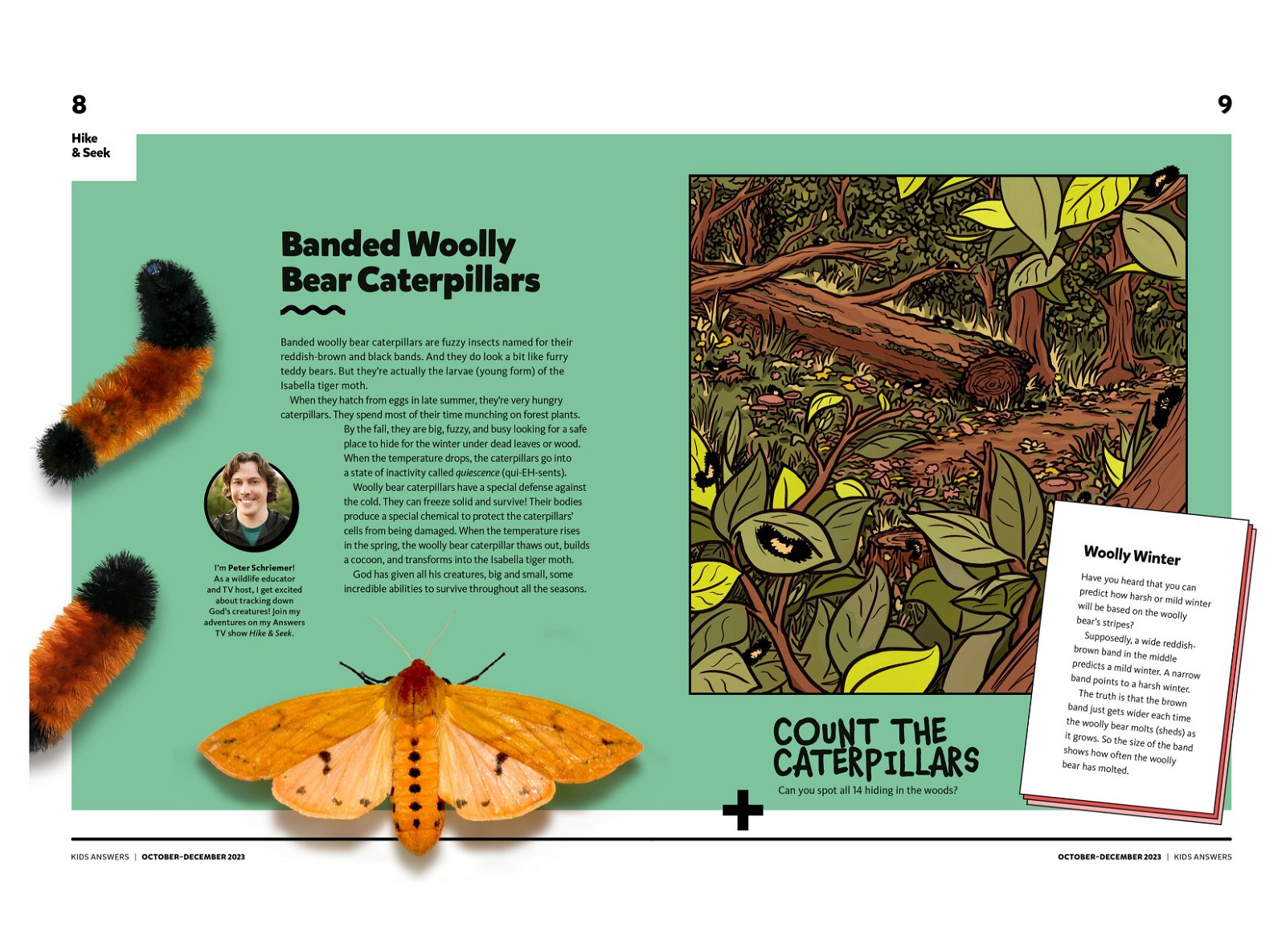Banded Woolly Bear Caterpillars
Banded woolly bear caterpillars are fuzzy insects named for their reddish-brown and black bands. And they do look a bit like furry teddy bears. But they’re actually the larvae (young form) of the Isabella tiger moth.
When they hatch from eggs in late summer, they’re very hungry caterpillars. They spend most of their time munching on forest plants. By the fall, they are big, fuzzy, and busy looking for a safe place to hide for the winter under dead leaves or wood. When the temperature drops, the caterpillars go into a state of inactivity called quiescence (qui-EH-sents).
Woolly bear caterpillars have a special defense against the cold. They can freeze solid and survive! Their bodies produce a special chemical to protect the caterpillars’ cells from being damaged. When the temperature rises in the spring, the woolly bear caterpillar thaws out, builds a cocoon, and transforms into the Isabella tiger moth.
God has given all his creatures, big and small, some incredible abilities to survive throughout all the seasons
.Woolly Winter
Have you heard that you can predict how harsh or mild winter will be based on the woolly bear’s stripes?
Supposedly, a wide reddish-brown band in the middle predicts a mild winter. A narrow band points to a harsh winter.
The truth is that the brown band just gets wider each time the woolly bear molts (sheds) as it grows. So the size of the band shows how often the woolly bear has molted.

I’m Peter Schriemer! As a wildlife educator and TV host, I get excited about tracking down God’s creatures! Join my adventures on my Answers TV show Hike & Seek.
Kids Answers Magazine
Your Terrific Tongue
Talking, tasting, swallowing, even whistling—your tongue does amazing things every day.
Browse Kids Issue- © 2025 Answers in Genesis
- Privacy Policy
- Contact
- About


